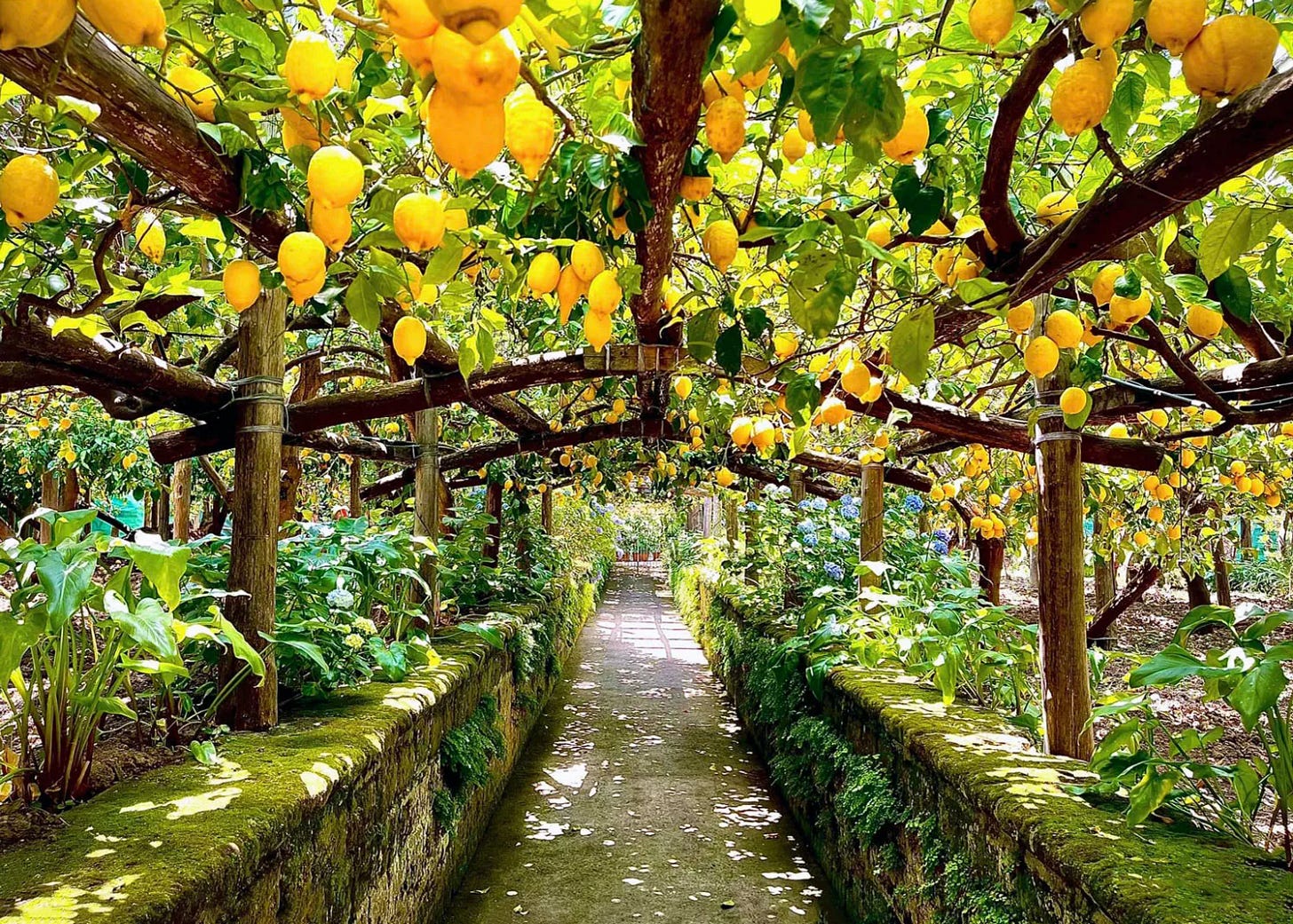The ABC's of Campania Food & Wine: L
L is for limone and Lettere Penisola Sorrentina DOC
L is for limone:
The IGP limone of southern Italy, Campania is known as the best lemon in the country. Vibrant yellow with thick skins and juicy innards, especially rich in essential oils and Vitamin C, these lemons are versatile and distinctive. They make tangy desserts, such as tarts, baba al limoncello, granita and delizia to name just a few. They are the secret to Sorrento’s famous limoncello, which is made by soaking the lemon peel in pure alcohol. The Amalfi variety is often eaten sliced and drizzled with olive oil and vinegar for a refreshing salad, and is even consumed in the local espresso as caffè di limone. These two lemons from the Amalfi Coast and Sorrento have more similarities than they do differences. The biggest difference is that the limone di Amalfi, of the variety Sfusato Amalfitano deriving from Femminella Sfusato, can grow as big as a grapefruit, has a slightly thicker peel, and is less acidic. The Sfusato Sorrentino is smaller, tangier, and with a sourer peel. Both have thick skins, the pane, pappa or albedo – the white pulp – also being quite thick. The juicy innards are almost seedless and, as already mentioned, delicious enough to be eaten in a variety of desserts and even, as already mentioned, as un’insalata (salad). Another similarity is the traditional growing method still implemented today. Terraced groves are protected by pagliarelle, or straw huts built around the lemon trees like houses. Harvest happens nearly year-round, but the highest yields are from late May through July. They are picked with the stems and a few leaves still attached, so keep an eye on that spot of green among the yellow when shopping. The lemons of Sorrento arrived in Italy at least as early as the first century AD, when murals depicting lemons are found painted in Pompeii and Herculaneum. The lemons of Amalfi arrived later, around the 11th century, imported by the Jesuits. By 1800, southern Italian lemons were a popular food item in Northern European and American markets; and by 1992, both lemons achieved IGP status.
touring information:
Ristorante Scarabeo Via Salette, 10 80079 Procida (Napoli) 39 081 896 9918 I Giardini di Cataldo Corso Italia, 267 Sorrento (Napoli) +39 081 878 1888 info@igiardinidicataldo.it Limonoro Via San Cesareo, 49/53 – 80067 Sorrento (Napoli) +39 081 878 5348
L is for Lettere Penisola Sorrentina DOC:
The DOC wines of Lettere, Sorrento grow on the terraced land of the northern peninsula in lush, green vineyards where mules still traverse the rocky paths bearing bunches of biancolella or falanghina in baskets on their backs to the pressers waiting below. Lettere wine gained DOC status in 1994. The wines of Lettere and of nearby village Gragnano are specifically known for a fizzy red wine that has recently lost a bit of production and popularity due to the expansion of other Napoli wines.
The Lettere Rosso is ruby red, medium-bodied and tannic, though not overpoweringly so. The grape varieties Piedirosso, Sciascinoso, Aglianico and others compose this wine that pairs well with eggplant, cuts of roast meat, red pasta sauces, and gnocchi alla sorrentina. Lettere Rosso Frizzante Naturale is less dry and of the same rich, red hue, though contains more intensely fruity aromas. The same red grapes are used, though here Piedirosso is the dominant variety. It pairs well with the simple pizza margherita and salsiccia e friarielli. Finally, the Lettere Bianco is straw yellow, with delicate and pleasant aromas. It is dry and balanced. Falanghina, Biancolella, and Greco are the prominent grapes used. Try this wine with risotto and seafood. While not famous, Lettere wine has a few prominent and enthusiastic followers. Pliny, Galen and Strabo have all extolled their praises for it, and Italian author Mario Soldati favors Lettere wine for its “literary” characteristics. Lettere wine is like a wine from a novel, with the small village of just a handful of families tucked into a rugged and lush Alpine setting, producing something of high quality and quite favorable characteristics - Lettere DOC wine.
Sources: Amalfi Coast and Sorrento Lemons. Unique Costiera. Limone Costa d’Amalfi IGP. Regione Campania Assessorato Agricoltura. Limone di Sorrento IGP. Sapore di Campania. Penisola Sorrentina: Gragnano, Lettere, Sorrento DOC. Regione Campania – Assessorato Agricoltura. Penisola Sorrentina. Sorrentine Specialties. Procida.net. Scotese, Amanda. Lemons in Italy. Rick Steve’s Europe. The Lemon of Sorrento. Bellevue Syrene: Sorrento Mag. Wines of the Campania Region. Friends of Sorrento.




